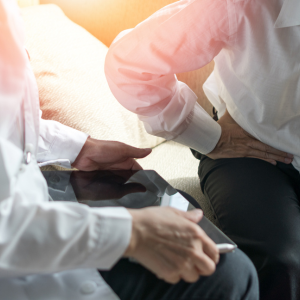Pouchoscopy

A pouchoscopy is an endoscopic procedure in which a doctor examines the inside of a J-pouch that has been created to replace the colon and rectum after a patient has had surgery, often for ulcerative colitis or Crohn’s.
A pouchoscopy is similar to a colonoscopy and is performed using a flexible tube with a light and camera at the end. The scope is inserted through the anus and into the pouch to allow the doctor to examine the inside of the pouch. The procedure is usually done under sedation, but can also be performed without sedation given the minimal discomfort associated with the procedure.
Diagnosis
A pouchoscopy is often done to diagnose and treat problems in the pouch, such as inflammation, strictures (narrowing), or blockages. The doctor may also take samples of tissue or remove any abnormal growths that are found during the procedure.
Risks
As with any medical procedure, there are potential risks associated with a pouchoscopy, such as bleeding, infection, and perforation (tearing) of the pouch. Your doctor will discuss the potential risks with you before the procedure and answer any questions you may have. Overall, the risks are usually very low.
FAQs
Patients are often on a clear liquid diet the day before a pouchoscopy. The prep may involve a laxative such as magnesium citrate, or enemas to clean out the lower GI tract. You will receive detailed instructions from the physician’s office.
Pouchoscopy is a procedure in which a camera is used to examine the pouch, which is a surgically created reservoir that is connected to the anus and is used to store and eliminate waste.
Pouchoscopy is typically performed to diagnose or monitor conditions that affect the pouch, such as pouchitis or Crohn’s disease. It can also be used to assess the function and appearance of the pouch and to guide the development of a treatment plan.
During pouchoscopy, a flexible tube with a camera on the end is inserted into the pouch through the anus. The camera sends a live video feed to a monitor, allowing the healthcare provider to examine the inside of the pouch. Pouchoscopy is usually performed under sedation or general anesthesia.
There are some risks associated with pouchoscopy, such as bleeding, infection, and reactions to the sedatives or anesthesia used during the procedure. There is also a risk of perforation, or puncture, of the pouch during the procedure. However, these risks are generally low and can be minimized by working with an experienced healthcare provider.
Pouchoscopy typically takes 10-15 minutes to complete. The procedure may take longer if biopsies or other procedures are performed during the exam.
Pouchoscopy is usually performed under sedation or general anesthesia, so you should not feel any pain during the procedure. You may experience some discomfort or bloating after the procedure due to the insertion of the flexible tube, but this should resolve quickly.
After pouchoscopy, you will be monitored until the sedatives or anesthesia have worn off. You may be given instructions on how to care for the pouch and manage any discomfort or bloating. You may also be given a follow-up appointment to discuss the results of the procedure with your healthcare provider.
You may be advised to avoid strenuous activity or heavy lifting for a period of time after pouchoscopy. Your healthcare provider will give you specific instructions on what you can and cannot do after the procedure.
Pouchoscopy can be repeated if necessary, either to monitor the progress of treatment or to assess the pouch for any changes or abnormalities. The frequency of pouchoscopy will depend on your individual circumstances and the recommendations of your healthcare provider.